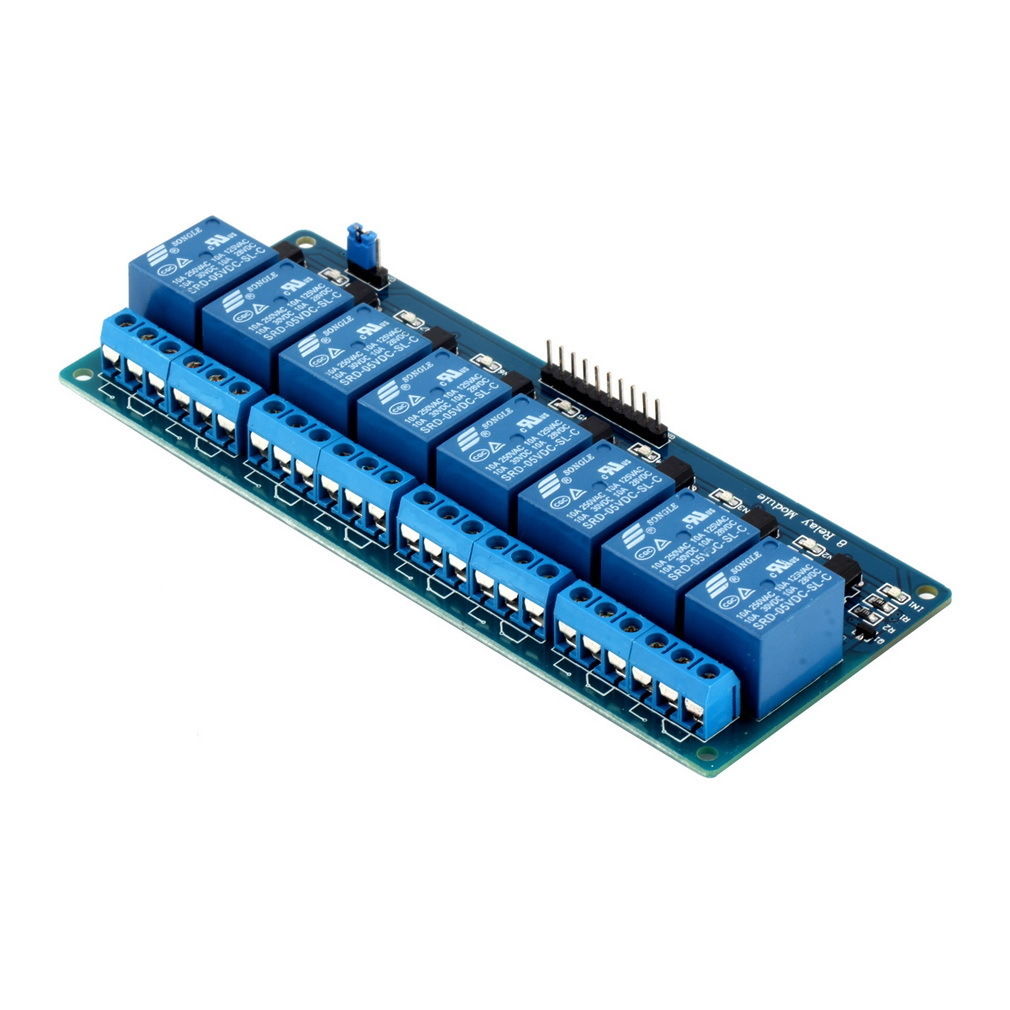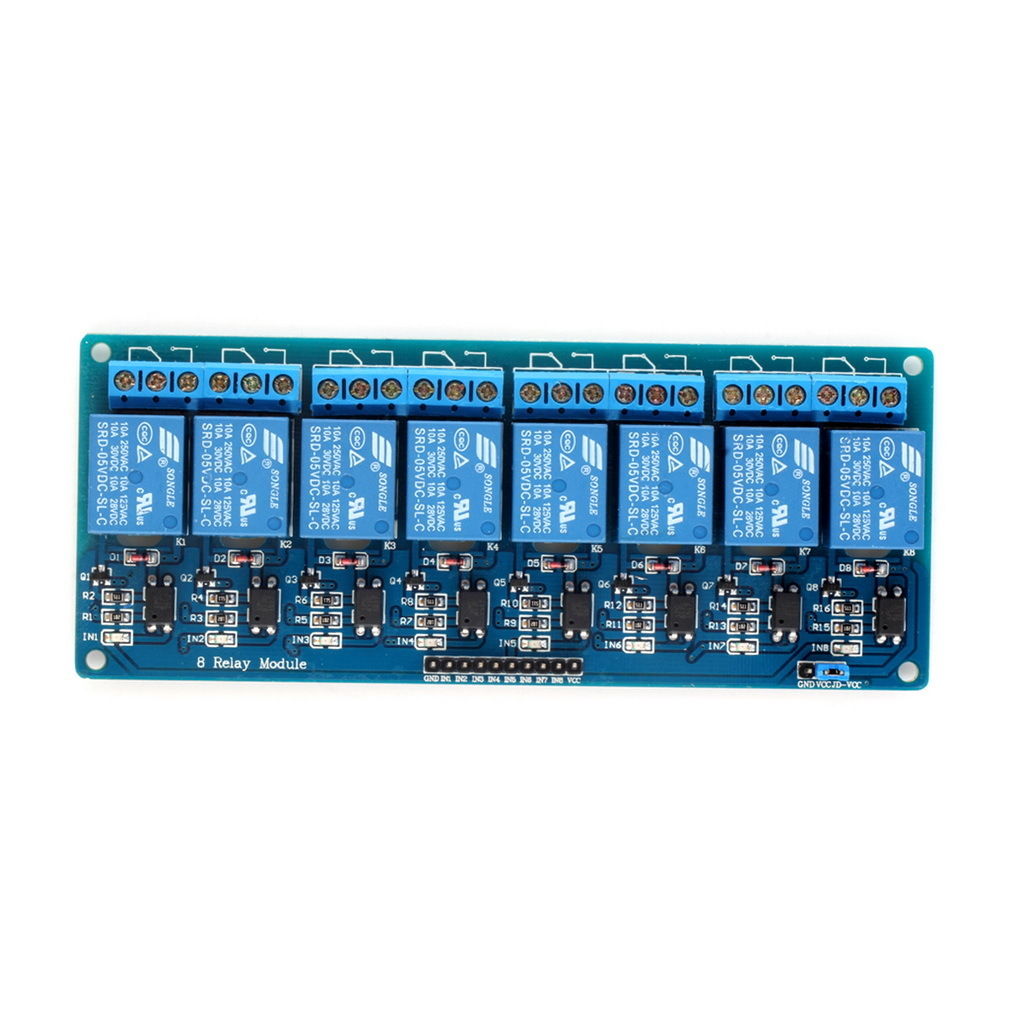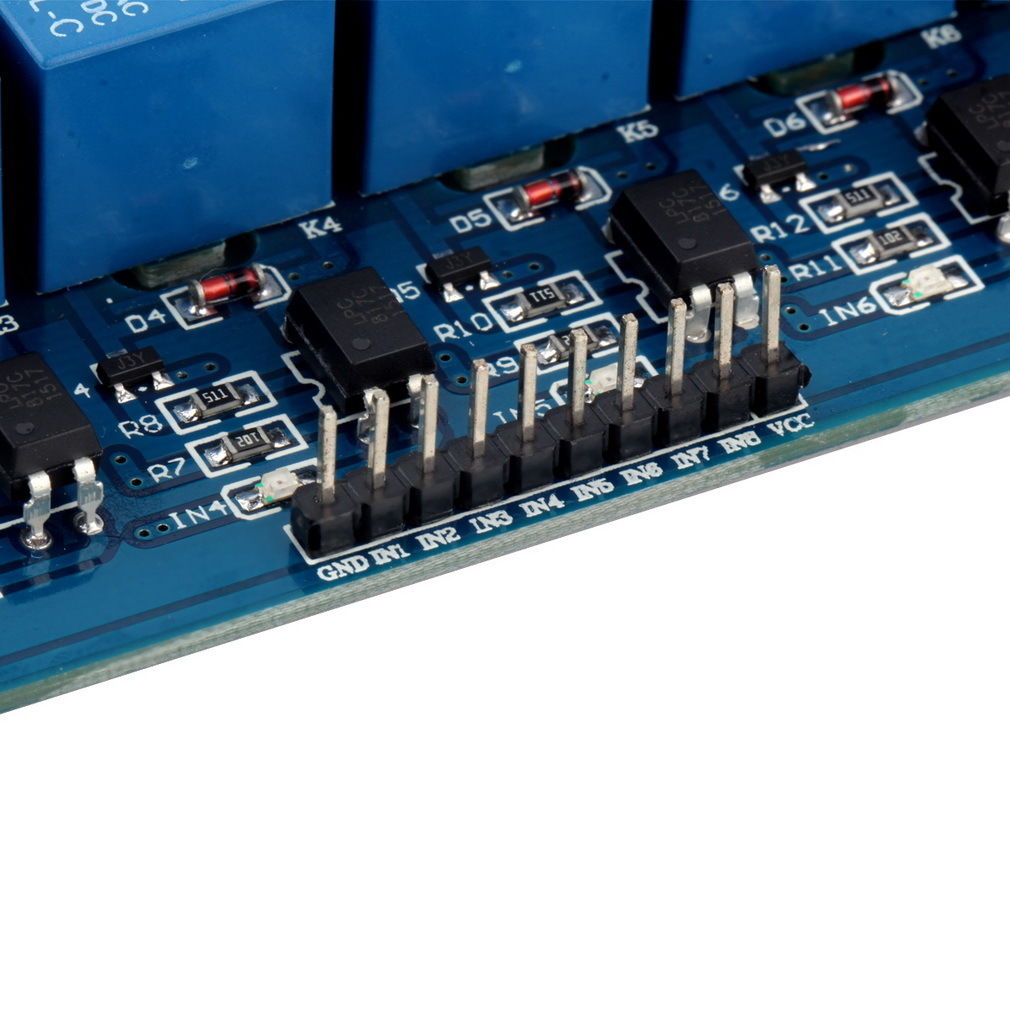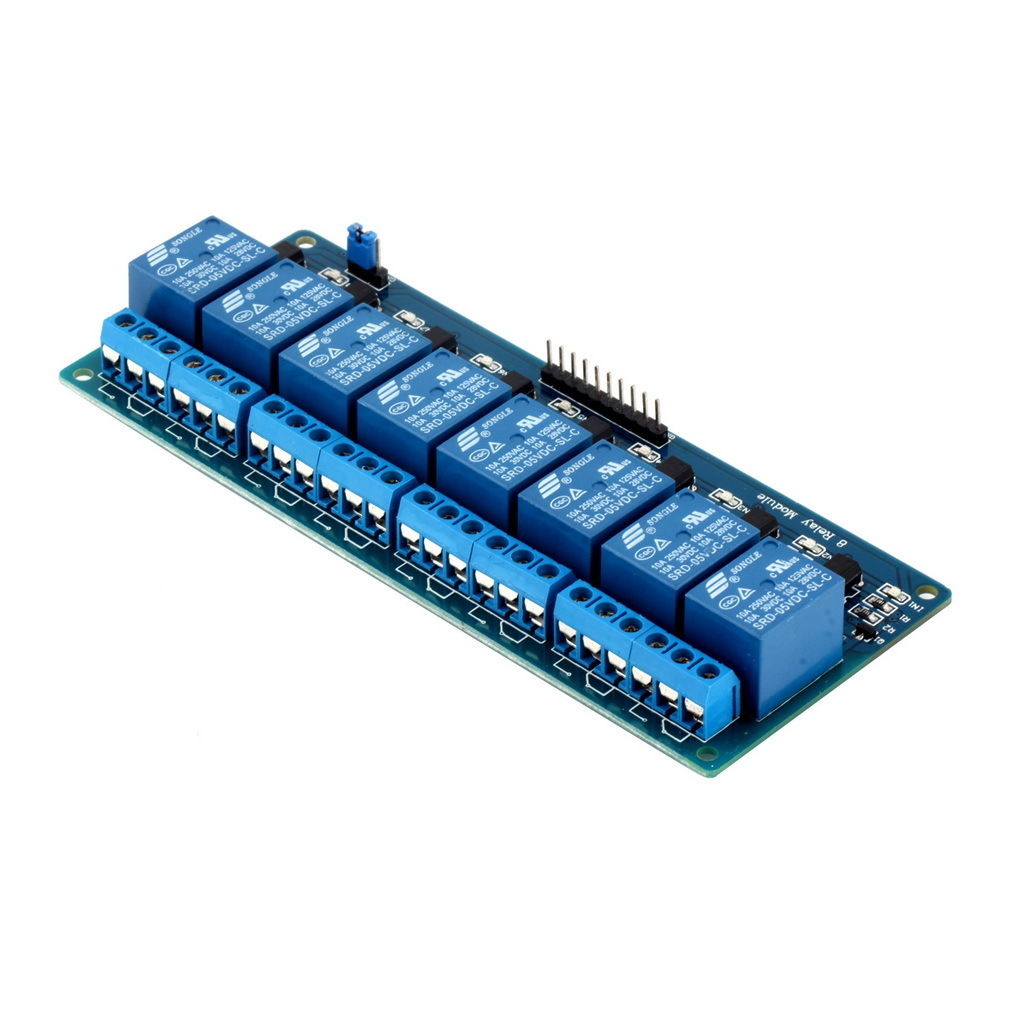
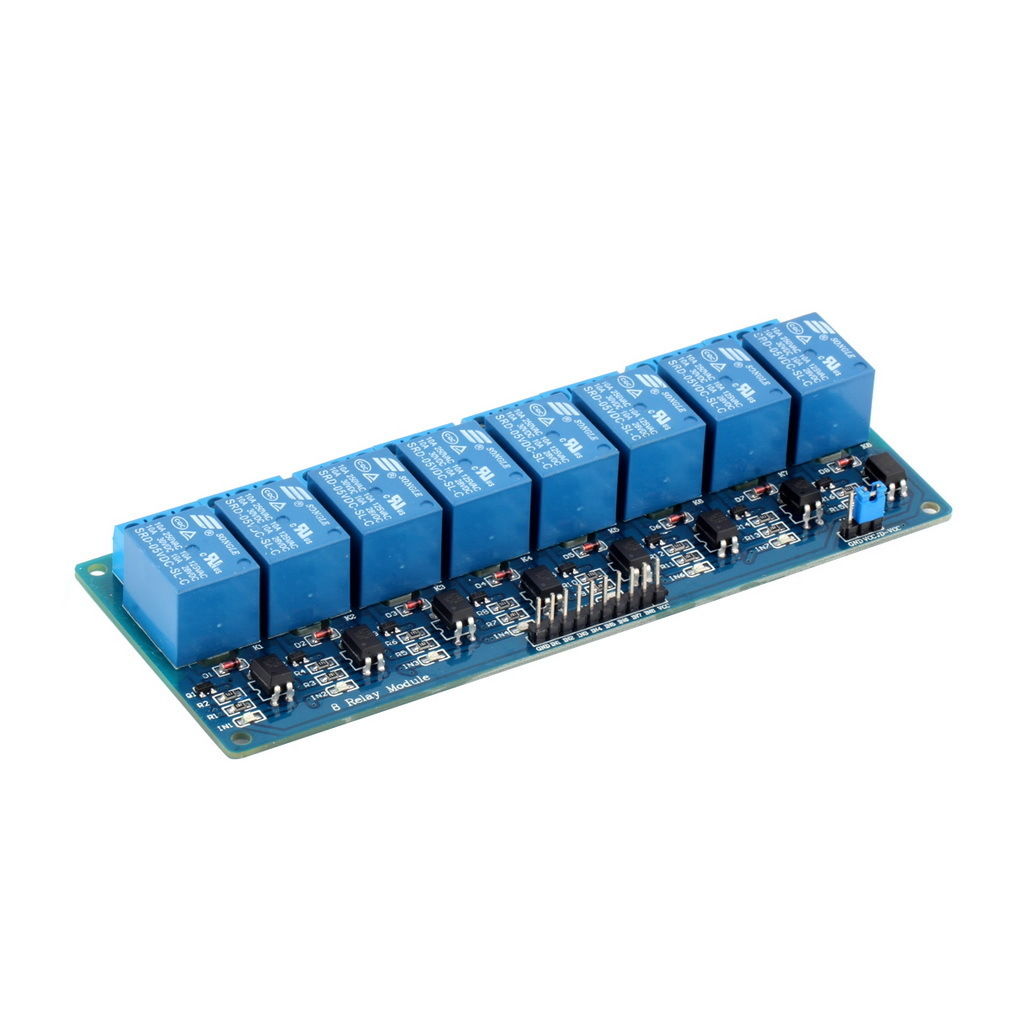
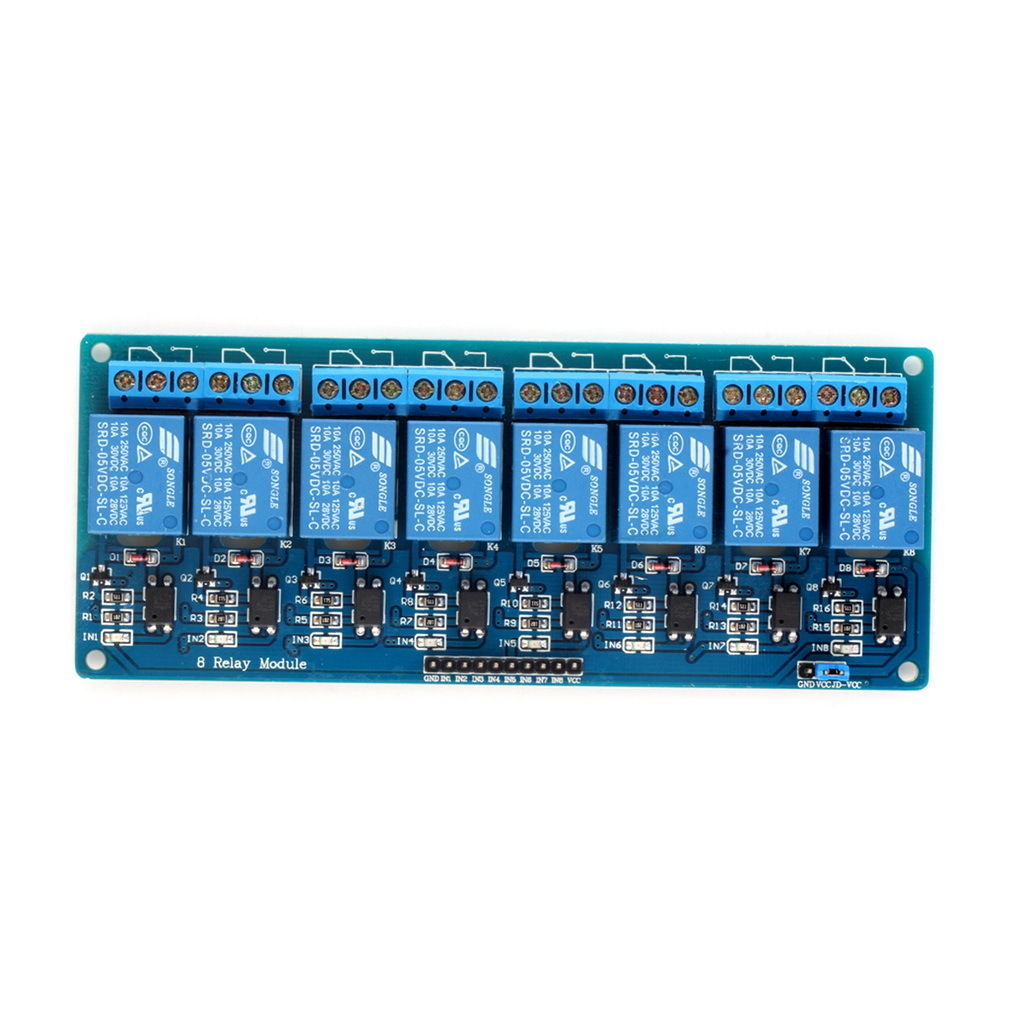
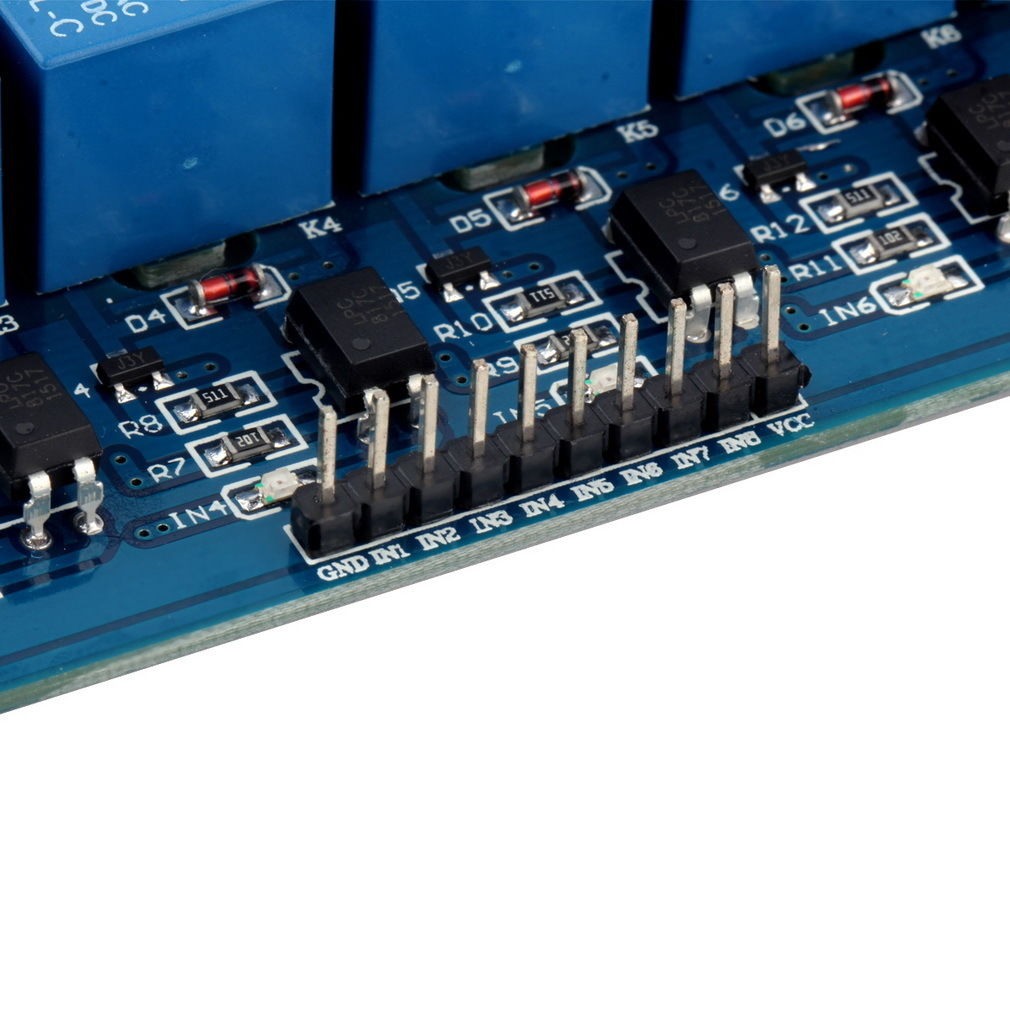
Description
V 8-Channel Relay Module: This is an 8-channel relay board that operates on 5V. It can be used directly to control 240V power appliances from most microcontrollers and other control system circuits. Perfect for switching 240V appliances like lights, fans, etc.
The board has a high-quality relay, which can handle a maximum of 10A at 250V or 15A at 125V AC. Each relay has three connections: common (C), normally open (NO), and normally closed (NC) brought out to three-pin screw terminals, which makes it easy to make and remove connections. The board has a power indication and a relay status LED to ease debugging. Power input and relay control signals are brought to the header pins on the board.
A wide range of microcontrollers, such as Arduino, AVR, PIC, ARM, and so on, can control it. The use of such a high-voltage relay eliminates the risk of heating up the relay, as electromechanical relays limit current consumption in accordance with a voltage rating.
Note: On the high-level and low-level-triggered mode, friends who do not understand, have a look
- A high-level trigger refers to the signal voltage between input and trigger, which can be understood as a signal input with VCC cathode short-circuit triggered away;
- Low-level trigger refers to the signal voltage between the input terminal and Earth OV trigger, which can be understood as the signal input terminal and the GND negative electrode short circuit triggered away from the 1-channel relay module connection.
Specifications
- 100% Brand New
- Size: 13.8 x 5.6 x 1.7cm (LxWxH)
- Working voltage: 5V
- Channel: 8 channel
- This relay module is 5V active low.
- It is an 8-channel relay interface board, which can be controlled directly by a wide range of microcontrollers, such as Arduino, AVR, PIC, ARM, PLC, etc.
- It is also able to control various appliances and other equipment with a large current.
- Relay output maximum contact is AC250V 10A and DC30V 10A.
- Standard interfaces can be directly connected to microcontrollers.
- Red working status indicator lights are conducive to safe use.
- Widely used for all MCU control, industrial sector control, PLC control, and smart home control.
Package Includes
- 1 x 8 channel relay module
Pin Description: 5V 8 Channel Relay Module
- C=common: This is the common terminal. This terminal will be connected to either of the other 2 terminals (NO or NC) based on the state of the relay.
- NO=normally open: As the name indicates, this is a normally open terminal, i.e., if the relay is not energized (not ON), this pin will be open. We can say that the switch is OFF by default, and when the relay is energized, it will become ON.
- NC=normally close: As the name indicates, it is a normally closed terminal, i.e., if the relay is not energized (not ON), this pin will be closed. We can say that the switch is ON by default, and when the relay is energized, it will become OFF.
Applications: 5V 8 Channel Relay Module
- To Control solenoids
- Motors
- Bulbs and bulbs
- Lamps
- Smart home control
Integration with Arduino

Sample Code
int BASE = 2 ; // I/O pin connected by the first relay
int NUM = 8; //total number of all relays
void setup()
{ //https://kitsguru.com/products/8-channel-isolated-5v-10a-relay-module-opto-coupler-for-arduino-pic-avr-dsp-arm
for (int i = BASE; i < BASE + NUM; i ++)
{
pinMode(i, OUTPUT); //set digital I/O pin as output
}
}
void loop()
{
for (int i = BASE; i < BASE + NUM; i ++)
{
digitalWrite(i, LOW); //set digital I/O pin as ‘low’, i.e. turning off the relay gradually
delay(200); //delay
}
for (int i = BASE; i < BASE + NUM; i ++)
{
digitalWrite(i, HIGH); // set digital I/O pin as ‘low’, i.e. turning on the relay gradually
delay(200); //delay
}

